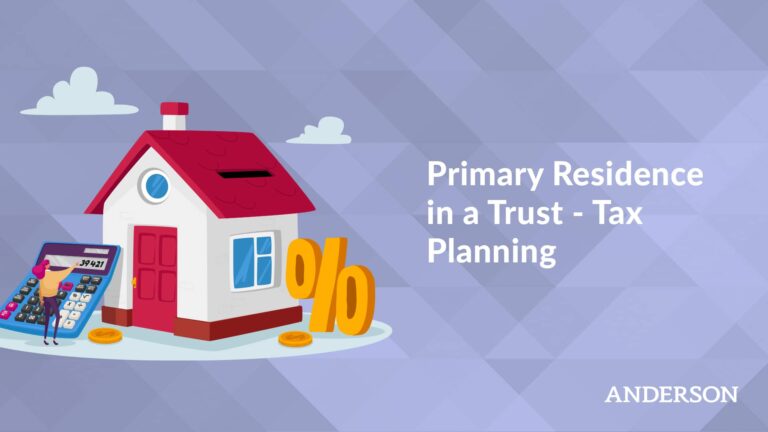
If you’ve been following the headlines, you’ve probably heard about President Trump’s Big Beautiful Bill Act, his latest proposed tax plan. It’s an ambitious 1,116-page proposal designed to extend and expand many of the tax benefits from the 2017 Tax Cuts and Jobs Act.
I’m breaking down the key tax provisions that matter most to real estate investors, business owners, and high-income W-2 earners. Whether you’re trying to protect your assets, minimize tax liability, or maximize investment returns, this new bill could offer some powerful opportunities—if you know how to leverage them.
Let’s dive into the top tax-saving highlights. For a full breakdown of all 17 provisions, watch my video here. And be sure to like and subscribe to my channel for more strategies to help you slash your tax bill.
Permanent Extension of Lower Individual Tax Rates
If this bill passes, the lower individual federal income tax rates introduced in 2017 will remain in place. Without it, we’d be facing an automatic rate increase at the end of this year. If you’re an investor or business owner in a higher tax bracket, this change helps you keep more money to reinvest or grow your business.
Enhanced Standard Deduction
Most taxpayers will see their standard deduction nearly double from $8,300 to more than $16,000 for singles, with even larger increases for married couples. For high-income W-2 earners who don’t typically itemize, this creates more room for tax savings.
100 % Bonus Depreciation (Section 168) Through 2029
This is one I’m particularly excited about as a real estate investor. Bonus depreciation is back on the table through 2029, and it opens some major opportunities for those of us investing in real estate and other assets.
So, what exactly is bonus depreciation?
Under Section 168(k) of the tax code, bonus depreciation allows you to immediately deduct 100% of the cost of qualifying assets in the year you place them in service—instead of spreading those deductions out over many years through regular depreciation.
For real estate investors, this is huge. You typically depreciate certain parts of a property, like the building structure, over 27.5 years for residential or 39 years for commercial real estate. But with cost segregation, you can break out components of the property that qualify for faster depreciation:
- Appliances
- Flooring
- Lighting
- HVAC systems
- Landscaping
- Site improvements
- Personal property within the building
With 100% bonus depreciation, you can fully write-off these short-life assets (typically with a useful life of 20 years or less) in year one. That can create massive upfront tax deductions, often resulting in paper losses that offset other income.
For syndicators and real estate partnerships, this is a particularly powerful tool. You can pass those paper losses through to investors, reducing their taxable income from other real estate gains or even offsetting certain types of ordinary income.
And it’s not just for real estate. Bonus depreciation also applies to many other types of business property and equipment, so it’s a strategy that benefits both investors and business owners.
Bottom line: If you’re acquiring new properties, making improvements, or buying business assets over the next few years, this provision gives you a unique opportunity to supercharge your deductions and reduce your taxable income.
Request a free consultation with an Anderson Advisor
At Anderson Business Advisors, we’ve helped thousands of real estate investors avoid costly mistakes and navigate the complexities of asset protection, estate planning, and tax planning. In a free 45-minute consultation, our experts will provide personalized guidance to help you protect your assets, minimize risks, and maximize your financial benefits. ($750 Value)
Increased Section 179 Deduction
For business owners, the proposed changes to Section 179 are especially valuable. The deduction limit is increasing from $1 million to $2.5 million, with the phase-out threshold moving to $4 million.
So, what is Section 179?
Section 179 lets businesses immediately expense the full purchase price of qualifying equipment, software, and certain property improvements in the year they place those assets into service, rather than depreciating them over several years.
This means if you buy a $500,000 piece of equipment, you can deduct the entire $500,000 on this year’s tax return, reducing your taxable income right away. That’s a major cash flow benefit.
Qualifying assets typically include:
- Business equipment
- Computers and software
- Office furniture and fixtures
- Certain building improvements (such as HVAC, fire protection systems, security systems)
- Vehicles used for business purposes
Why does this matter?
If you are investing heavily in your business—upgrading equipment, expanding operations, or improving your properties—Section 179 lets you recover your costs faster and reduce your current tax bill.
It also provides a smart alternative to bonus depreciation in situations where your state tax laws don’t align with federal depreciation rules. In other words, you may be able to capture more savings at both the federal and state levels by using Section 179, where it makes sense.
Overall, the proposed increase to Section 179 is a business-friendly change that rewards growth and reinvestment—and it is something every business owner should evaluate in their tax strategy for the coming years.
Permanent Limits on Itemized Deductions
Miscellaneous itemized deductions, which were set to return in 2026, will now remain eliminated. This simplifies tax planning for many investors and business owners.
SALT Deduction Cap Increased to $30,000
This is a notable change for those investing or living in high-tax states. The state and local tax (SALT) deduction cap would increase from $10,000 to $30,000.
If your modified adjusted gross income is under $400,000, you’ll benefit the most. For those earning more, the deduction phases down gradually.
No Tax on Tips and Overtime (2025–2028)
While not a long-term provision, eliminating taxes on tip income and overtime pay for individuals earning under $160,000 could create savings for high-earning service industry workers and those with side income.
Car Loan Interest Deduction
This new deduction allows taxpayers to write-off up to $10,000 in car loan interest. This is a valuable provision if you are financing business vehicles, RVs, motorcycles, or other qualifying vehicles.
Bigger HSA Contributions and Fitness Write-Offs
For individuals earning under $75,000 (or families under $150,000), you will now be able to double your Health Savings Account (HSA) contributions. Additionally, you can now use HSAs to cover gym memberships and fitness activities—up to $500 per year for individuals or $1,000 per family.
Bigger Section 199A Deduction for Flow-Through Income
This is an important win for real estate investors and business owners. The new bill increases the Section 199A Qualified Business Income (QBI) Deduction from 20% to 23% and makes it permanent.
If you operate through an LLC, S-Corp, or partnership, this means you’ll pay tax on just 77% of that flow-through income. If you are a high-income earner with side business income, this could result in significant tax savings.
Excess Business Loss Limitation Becomes Permanent
Excess business loss limitations will now be permanent. In plain terms, this rule caps how much business loss you can use to offset non-business income (like W-2 wages or investment income) each year. For 2025, the cap is about $313,000 for single filers and $626,000 for joint filers, indexed for inflation.
If your business losses (from real estate, cost segregation, or other ventures) exceed that limit, you carry the excess forward as a net operating loss to offset future income.
Real estate investors and business owners using aggressive depreciation strategies should plan around this cap to manage when they use those large paper losses.
New Opportunity Zones (2027–2033)
Opportunity Zones will receive a second round starting in 2027 through 2033. If you are a real estate developer or syndicator, this could offer capital gains deferral, step-up in basis, and tax-free gains for long-term holds.
Child Tax Credit Increase
For tax years 2025 through 2028, families can expect a $2,500 per-child tax credit. While not directly related to investing, this is a valuable benefit for families.
How to Leverage These Tax Provisions
Trump’s tax plan could open up major opportunities for smart planning, especially for real estate investors, business owners, and high-income W-2 earners.
Here are a few action steps to consider:
- Run projections now to structure deals and investments to maximize deductions
- Consider cost segregation and bonus depreciation opportunities in upcoming acquisitions
- Use flow-through entities (LLCs, S-Corps) to leverage the enhanced Section 199A deduction
- Explore Opportunity Zones for new projects starting in 2027
- Consult with a qualified tax advisor to tailor your tax strategies for your unique situation
It’s important to keep in mind that these tax provisions are only for federal tax. State and local tax laws vary. You should work with a qualified tax professional who can understand your unique tax situation and help you maximize your tax breaks.
Ready to optimize your tax savings?
Schedule your free 45-minute Strategy Session with one of our Senior Advisors today. We will help you create a personalized plan to protect your assets, lower your taxes, and increase your profitability.
Do not leave money on the table. These are the kinds of tax strategies real estate investors, business owners, and high-income earners use to build lasting wealth. Let us show you how to do the same.
















